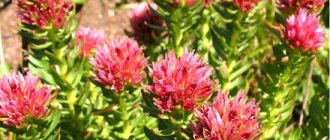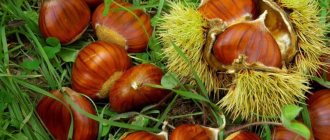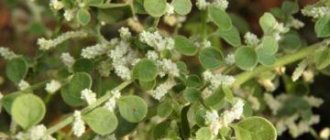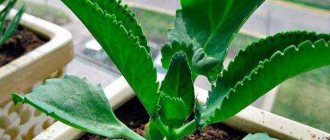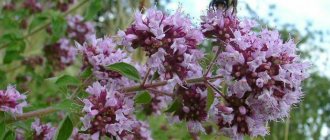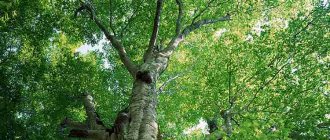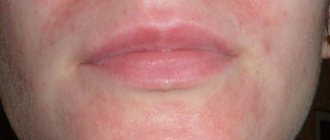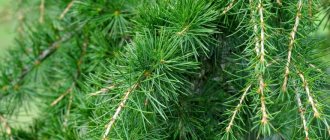Kalanchoe
Kalanchoe pinnate, medicinal or tree-like is an evergreen perennial of the Crassulaceae family. It is also called bryophyllum, tree of life and Goethe's tree. Kalanchoe juice, tincture and Kalanchoe ointment
has a therapeutic effect and is widely used in folk and official medicine.
Kalanchoe
What is it used for?
Juice improves the condition of ailments:
- runny nose, sinusitis, sore throat and colds;
- oral cavity: stomatitis, periodontal disease;
- wound healing for abrasions, frostbite, burns, purulent wounds;
- bedsores and trophic ulcers;
- reduced immunity and loss of strength;
- hemostatic;
- skin diseases, calluses and cracks on the feet;
- varicose veins and hemorrhoids;
- swelling of the legs;
- cosmetic problems.
Important! The effectiveness of Kalanchoe is officially recognized. The pharmacy sells juice, tinctures, ointments and powders for a wide range of applications.
Kalanchoe, description
Bryophyllum is a succulent with fleshy, feathery leaves, at the edges of which brood buds form, giving rise to young plants.
In the wild it grows in southern America and southeast Asia, growing up to one and a half to two meters in height. This unpretentious plant is often grown indoors.
About 200 species of succulent are known, but only Kalanchoe arborescens and Degremona have healing properties. The leafy stem is used for medicinal purposes, but only after it reaches half a meter in length and becomes woody in the lower part.
Chemical composition of Kalanchoe
composition of Kalanchoe, juice from Kalanchoe
Kalanchoe is a plant that is widely used in different areas of life. Its composition has been carefully studied since ancient times.
Scientists have discovered the following list of components in the living leaves of the plant:
- high molecular weight carbohydrates called polysaccharides (in concentrations up to 40%);
- organic acids (citric, malic, oxalic and acetic);
- high molecular weight phenolic compounds (0.032%);
- flavonoids - up to 8.05% (the main one is jealin bioside);
- glycosides;
- protein molecules;
- proteins and glycoproteins;
- trace elements (copper, calcium, magnesium, manganese, aluminum, silen, iron and nickel);
- vitamin P and C.
Kalanchoe was subjected to a number of tests, after which it became known about a possible increase in the concentration of healing components in its composition. If you take cut Kalanchoe leaves and place them in the refrigerator for 5-7 days, the amount of useful components will double.
The plant consists of many useful components, which allows it to be used to treat many diseases. Many years ago, people collected Kalanchoe from meadows for later use in folk medicine. Now the plant is also in great demand for medicinal purposes. Residents of different countries grow it at home, as well as in flower beds for further use.
Contraindications
Kalanchoe should not be used if you are hypersensitive to its constituent substances. It is also not recommended to treat children under six years of age with plant preparations. People with low blood pressure and those suffering from kidney disease should exercise caution when taking Kalanchoe preparations internally. Before you start taking Kalanchoe preparations, consult your doctor.
You can also get information about the medicinal properties of Kalanchoe from the following video:
Kalanchoe, beneficial properties and applications
Kalanchoe leaves are saturated with a variety of beneficial substances (vitamins, organic acids, enzymes, flavonoids, steroidal and tannins, macro- and microelements), which determines their beneficial properties.
Kalanchoe ointment is used in medicine
, freshly squeezed and canned juice, Kalanchoe tincture, drops, lotions, tampons.
Bryophyllum normalizes metabolism, relieves inflammation and relieves pain, stops and purifies blood, disinfects wounds and activates their healing, tones the body, restores strength and fills with energy after a long illness and surgical treatment, removes toxic substances, and has an antiseptic effect.
The most effective effect of the “surgeon without a knife” - this is how this amazing plant is called for its ability to cleanse necrotic masses - is for dermatological diseases. External treatment will help cure burns, long-term non-healing festering wounds, ulcers, fistulas, bedsores, tissue necrosis, furunculosis, psoriasis, eczema, abscess, herpes, erysipelas, felons, acne, warts, cracked nipples.
Thanks to its bactericidal effect, the tree of life is used in the treatment of ENT diseases (rhinitis, sinusitis, sinusitis, tonsillitis, sore throat, otitis), colds, flu, tuberculosis. In ophthalmology, the plant treats conjunctivitis, iridocyclitis, blepharitis, keratitis, erosion, burns and injuries. It helps even when medications are unable to solve the problem.
Kalanchoe is also used in dentistry: for advanced forms of gingivitis, periodontitis and stomatitis. The plant will relieve inflammation, eliminate purulent deposits, stop bleeding, and relieve toothache.
“A surgeon without a knife” will help get rid of gynecological diseases (erosion, endocervicitis), accelerate the healing of ruptures after childbirth, and come to the aid of diseases of the musculoskeletal system (arthritis, arthrosis, osteomyelitis, bone fractures), inflammation of the digestive tract, ulcers, kidney pathologies , varicose veins.
Risks and Warnings
Each medicinal plant, including Kalanchoe, has contraindications for use. Before using Kalanchoe products, you should consult a doctor. It is possible that the use of drugs with this flower is impossible for health reasons.
It is impossible to be treated with Kalanchoe medicinal remedies in the following cases:
- pregnant and lactating women;
- in case of an allergic reaction;
- with bronchial asthma and bronchitis;
- cirrhosis and other liver diseases;
- with low blood pressure;
- for oncological diseases and tumors.
Medicinal Kalanchoe is an amazing flower that should always be in the house. It is easy to grow as it is low maintenance. The long list of beneficial properties of the flower makes it an indispensable assistant in the treatment of various diseases. Disinfectant and antiseptic qualities can quickly disinfect wounds and cuts, accelerating the healing process.
If you find an error, please select a piece of text and press Ctrl+Enter.
The use of Kalanchoe in cosmetology
use of Kalanchoe in cosmetology
Kalanchoe juice has a rich complex of natural components that have a positive effect on the regeneration of the cell layer. In this regard, the plant is added as an active ingredient to many skin care products. This especially applies to creams for the neck and décolleté area. Cosmetics containing the juice of a medicinal plant provide nutrition, long-lasting elasticity and healthy skin.
Together with well-known herbs, such as hops or rosemary, Kalanchoe gives the skin greater tone and improves blood circulation in muscle fibers. To achieve a positive effect, cosmetics should be used daily. Moreover, it is better to combine its use with gymnastics to tone the facial muscles.
The healing composition of Kalanchoe helps fight acne and other skin problems. Since ancient times, plant juice diluted with water has been used to wipe the face. For serious skin problems, the face was covered with a mask of finely chopped plant leaves. Over time, with systematic use of the mask, the skin of the face became healthy and fresh.
Release form
- Alcoholic juice solution from fresh shoots of Kalanchoe with a specific odor for local and external use in glass bottles of 20, 100 ml in a cardboard package or in ampoules of 10 ml in a cardboard pack No. 10.
- Ointment - Kolanchoe juice, anhydrous lanolin, furazolidone, novocaine in an aluminum tube of 10, 20.50 g.
The medicine has a yellow-orange hue, a sweetish-bitter taste with a specific, slightly unpleasant aroma, and is available for sale in several types:
- ampoules with juice, the volume of which is 3, 5, 10 ml;
- bottles of 20 and 100 ml;
- ointment in tubes of 50, 20.10 g containing Kalanchoe, it includes 40 g of juice, 60 g of lanolin, 250 mg of novocaine, 250 mg of furazolidone.
Regardless of the form of release, the presence of acids of organic origin is determined so that, in terms of malic acid, it contains at least 1.2%. In this regard, each liter of juice sold in pharmacies contains about 996.6 ml of freshly squeezed juice.
Traditional recipes with Kalanchoe
To prepare canned Kalanchoe juice
, the plant should be washed in advance and placed in the refrigerator for 7 days. Then it is crushed and the juice is squeezed out through a cloth. Place it in the refrigerator again for a couple of days to settle. Carefully pour into another container, leaving sediment, and fill with five times the volume of alcohol. Store in the cold.
recipes with Kalanchoe
For colds, arthritis and sinusitis
For colds, inflammation of the stomach, intestines and kidneys, arthritis and arthrosis, drink juice (5 milliliters) dissolved in water (250 milliliters). For tuberculosis, it is consumed twice a day, 2-3 milliliters, diluted with water three times the volume. When coughing, mix the juice with honey. For joint diseases, in addition to internal use, external use in the form of compresses is recommended.
For rhinitis, sinusitis, otitis, conjunctivitis, juice is dripped 3-4 times a day, diluted five times with vegetable oil or water. In some cases, undiluted juice is instilled into the nose, which promotes strong sneezing and effective cleansing of the nasal cavity. For preventive purposes, during a flu epidemic, the juice is applied to the mucous membranes of the nose.
For burns and varicose veins
For burns, mix Kalanchoe juice
and whipped egg white. The mixture is applied to the affected areas. To treat trophic ulcers, gauze is soaked in juice and applied as a compress to the wound. To ease the burning sensation, you can add a solution of novocaine.
Kalanchoe for burns
Alcohol tincture
prepared according to the following recipe: leaves and stems are crushed and poured with vodka in a ratio of 1:10. Insist in warmth for 10 days. To rinse the mouth and throat, the tincture (5 milliliters) is diluted in water (120 milliliters).
For varicose veins you will need a concentrated tincture
. The leaves are crushed and half the jar is filled with them. Top up with vodka. Place in a dark place for a week. The lower extremities are rubbed daily, starting from the feet and ending with the knees.
To restore strength and gain energy, Kalanchoe tincture
on honey and wine. To prepare it, mix juice (150 milliliters), honey (350 milliliters) and Cahors (250 milliliters) well. Leave to infuse for 5 days in a dark place. Shake periodically. Drink 20 milliliters three times a day 20 minutes before meals for 15-20 days.
To prepare Kalanchoe ointment
, the juice of the plant is combined with twice the volume of olive oil. The mixture is placed in a water bath for half an hour.
You can prepare Kalanchoe ointment
and according to another recipe. For it, mix plant juice (60 milliliters), oil tincture of poplar buds (20 milliliters) and oil tincture of St. John's wort (20 milliliters). Treat damaged areas of the skin.
Lotion will help get rid of acne. Leaves (15 grams) are finely chopped and brewed with boiling water (250 milliliters). Leave to infuse for 2 hours. After washing with lotion, wipe the skin of the face. The product will have a disinfectant effect, tighten pores, and eliminate excess oil.
Kalanchoe juice, Kalanchoe drops
What diseases does it treat?
As I said above, this remedy can cure many diseases, but now let's talk about this in more detail?
Skin
With the help of various ointments, lotions, and even simply applying a plucked and peeled leaf, the following diseases can be cured:
- burns
- boils, fistulas
- bedsores
- blackheads and acne
- ordinary and purulent wounds
Oral cavity
Also, this remedy, which can be called almost a golden elixir, helps with the following diseases of the oral cavity:
- sore throat
- stomatitis
- tonsillitis
- periodontal disease
For stomatitis, you can use an alcohol tincture by applying moistened gauze or a cotton pad to the sore spots. And if you have a sore throat, you need to gargle with a water tincture three times a day.
Ears
But with a sore throat or flu, there may be a complication in the form of otitis, and this is inflammation of the auricle. For otitis media, Kalanchoe is finely crushed, the juice is squeezed out and the turundum is moistened. After which it is placed in the ear for up to 6 hours, after which it must be replaced with the next earpiece.
Inflammatory diseases
For the following diseases such as colds, flu, runny nose and sinusitis, a tincture made from the following ingredients will help you:
- 50 ml Kalanchoe juice
- 0.5 l dry red wine
- 200 grams of rose hips
- 2 tbsp. honey
Preparation:
Pour red wine into an enamel pan and place rosehips in it. Then you close the pan with a lid and place it in a preheated oven at 50 degrees for two hours. The mixture must be stirred during preparation.
After two hours have passed, take out the pan and leave to steep for 10 hours at room temperature.
In order to express the prepared medicine, you need to shake the contents in a saucepan and express it through a sieve or gauze into a bottle, adding Kalanchoe juice and honey.
You need to take the resulting product 2 tbsp. before eating.
Avitaminosis
If there is a significant loss of strength and a lack of vitamins, in order to quickly replenish the body with strength and energy, in addition to vitamins, I advise you to consume 1 tsp. "baby" Kalanchoe. These “babies” grow along the edge of each leaf of a given plant. It is worth paying attention to the fact that there are always a lot of them in stock, since the plant reproduces very productively!
Runny nose
If you have a runny nose, I advise you to drip your nose twice a day with freshly squeezed juice.
This plant is very useful and helps with many diseases, and the recipes for making juices and various tinctures are simple.
Kalanchoe for the treatment of otitis media
With the onset of autumn, the risk of developing colds increases. This is because during this period a person’s immunity weakens significantly. For example, in the fall, many people develop otitis media or sinusitis. In this case, the indoor plant Kalanchoe will help. Thanks to its composition, it relieves inflammation and destroys bacteria in a short time. Therefore, it is recommended for use in the treatment of otitis media.
The juice is squeezed out of the plant, which, if properly prepared, can be instilled into the ear several times a day. It is important to dilute the Kalanchoe extract with clean water.
Is it possible for children?
You should know that Kalanchoe for a runny nose is used differently, depending on the age of the patient. Before starting treatment, it is necessary to properly prepare the juice. There are two ways to prepare this medicine for the common cold.
Methods:
- In a container, crush the leaves of the plant using any cutlery. Kalanchoe juice is easy to obtain by simply squeezing it with your hand. This product cannot be stored for more than one day. It is worth remembering that it has a high concentration; if you have a runny nose, you need to use it carefully.
- The second method is longer. The leaves are washed, dried, and stored in the refrigerator for about seven days. After this time, the leaves are crushed in any way, the juice is squeezed out through a bandage. Leave to settle. After a greenish precipitate has formed, the upper clear liquid is carefully poured into a container and used for the treatment of a runny nose. You should not store it for a long time; it is better to prepare it fresh.
You should know that Kalanchoe for the common cold is used differently, depending on the age of the patient.
There are many recipes for using medicinal juice for runny nose in adults.
Recipes:
- You can wipe the sinuses with a cotton swab dipped in pure juice from Kalanchoe leaves.
- Adults are allowed to use pure juice for instillation into the nose. Drop up to five drops into each sinus up to four times a day.
- Mix equal amounts of aloe and Kalanchoe juice. The resulting solution is dripped into the nose, two to three drops twice a day.
- The juice of one onion is mixed with Kalanchoe extract in a proportion of ½ (less onion). The mixture is allowed to drop two drops into each nostril three times a day.
You need to carefully monitor the reaction. If severe irritation or nosebleeds occur, treatment should be stopped immediately.
Infants are allowed to use Kalanchoe for a runny nose. In this case, they use not juice, but a decoction. It is less concentrated. There is an unspoken rule - the smaller the child, the weaker the medicine should be. Therefore, a child up to one year old is allowed to be treated with solutions with very low concentrations. The decoction is prepared quickly and easily.
Preparation:
- Several leaves are filled with a small amount of cold water.
- Place the container on the fire and bring to a boil.
- The boiling point is removed and left to stand for one hour.
How to drip the decoction to an infant? The medicine is used like Kalanchoe juice - a few drops up to three times a day. Parents should definitely monitor the baby’s condition; Kalanchoe is a rather allergenic plant.
Recipes for children
Dr. Komarovsky believes that using the plant for the treatment of a runny nose is completely acceptable if you are careful. For children from one to two years old, it is better to use a decoction of the plant.
Older children are allowed to use diluted juice. You shouldn’t put a lot of product into each nostril; one or two drops three times a day is enough.
When treating a runny nose, children should not combine juice from Kalanchoe leaves with additional ingredients. This can cause irritation of the mucous membrane and allergic reactions.
Young children should not be given fresh juice of this plant to cope with a runny nose, because the reaction of their body is unpredictable and parents should not forget about this. For this reason, a special decoction is made, because it in no way contributes to irritation of the mucous membrane. Its preparation will not be problematic and can be done at home.
It is recommended that older children be given specially made juice, but it should not be instilled. They wipe the nasal cavity. For this purpose, a cotton swab is used, which is dipped in the juice of the plant, after which the baby’s nose is wiped. The procedure is not painful, so children will not mind it. When a child reaches the age of over one and a half years, you can use pure juice, but you should not be too zealous. It is not recommended to use it more than three times a day. Doctors recommend diluting it with boiled water in a one to one ratio.
With this treatment of a runny nose, it is necessary to constantly monitor the child’s condition. This is due to the fact that the concentrate used may be too strong, and this causes damage to the nasal mucosa. Another unpleasant moment that should not be forgotten is the manifestation of an allergic reaction.
Adults can use the juice of this plant only in its fresh form. It is required to drip three drops into each nostril only three times a day. It is not used in its original form, but is diluted with water in equal proportions. Increasing the effect of such treatment is also possible. In this case, a composition is made that contains aloe juice.
You can add onion juice, which will quickly eliminate any colds. As an alternative, it is proposed to purchase drops based on the addition of Kalanchoe to them. But we must understand that in this case there is no guarantee of the naturalness of the composition. This is often used for various types of sinusitis.
To obtain a positive result from such treatment, it is recommended to pre-procure the necessary ingredients. In addition, you need to determine the concentration of antiseptic components in a given plant. For this purpose, watering the plant is canceled, which is done a week before receiving the necessary medicine.
After a week of not watering, the leaves should be cut off with the cuttings and placed in a cool place for seven to eight days, for example, in a cellar. When the plant has been left for the specified period of time, you can use improvised means to extract the juice and pour it into a container made of glass to use if necessary. A similar composition can be placed in the refrigerator, where it is stored for up to two to three weeks, during which the healing properties do not disappear.
When considering the issue of treating a runny nose using Kalanchoe, it is worth noting the simplicity of this folk technique. You will need to take a pipette and drop the solution two to three drops per day. The composition will have a mild effect and enter the maxillary sinuses, where it performs disinfection. In this case, the active secretion of mucus immediately begins, which is not something to be afraid of, because this is how the body will cope with microbes.
But it is worth remembering that after instilling the nostrils, you must wait five to seven minutes before blowing your nose. It won’t be long before breathing through the nasal cavity can be normalized. This remedy is also used for snot in the throat. Just do not overdo it with the use of this healing agent.
In principle, it is possible. Some pediatricians even take it upon themselves to prescribe juice to their young patients, although they are well aware that the result is unpredictable and can unpleasantly surprise everyone.
Firstly, Kalanchoe juice can cause allergies in a child with a weakened immune system.
Secondly, it increases the risk of developing secondary edema and complications of rhinitis.
That is why you can use Kalanchoe juice, but with extreme caution. Despite numerous reviews from mothers on the Internet, you should not risk using this product on infants and children under one year old. For older children, it is advisable to dilute the juice with water or saline solution, and also follow the dosage.
Kalanchoe juice should be considered as an emergency measure for a child only if his nose is not breathing at all, and there is no way to blow his nose properly. This unconventional method of treating rhinitis should be abandoned if:
- If a child has an allergic runny nose. In this case, treatment of the cause is required, not elimination of the effect.
- If the child has a severe form of bacterial rhinitis. In this case, the mucus will have a green or gray color. This condition requires prompt treatment with antibiotics. Delay may cause complications.
- If a child has sinusitis with purulent nasal discharge.
- If the child has injuries to the nasal septum or curvature resulting from previous sinusitis.
Before first use, parents should conduct a home allergy test. To do this, apply a drop of concentrated (undiluted) juice to the child’s nasolabial triangle (in the dimple above the upper lip), rub lightly and evaluate the result after an hour and a half. If redness and swelling do not appear, Kalanchoe juice can be used. If even a minor reaction occurs, it is strictly forbidden to use this remedy for this child.
You can drip Kalanchoe juice no more than 2 times a day, no more than five days. This is what traditional healers say. More skeptical specialists in the field of traditional medicine talk about the juice of this plant as a means of one-time use, for isolated cases, considering a course of treatment of Kalanchoe unjustified.
Kalanchoe for the treatment of trophic ulcers
You can cure a trophic type ulcer with the help of the indoor Kalanchoe plant. People who prefer traditional methods of treatment can use Kalanchoe in the treatment of ulcerative wounds without harm to the whole body.
Thanks to its medicinal composition, Kalanchoe fights trophic ulcerative diseases in a short time, regardless of the degree of their development.
Therapeutic actions to relieve symptoms of the disease and its further development can be carried out at home:
- To prepare the medicine you will need one large Kalanchoe leaf.
- The leaf must be crushed, placed on sterile gauze and applied to the area affected by the ulcer on the skin.
- This bandage serves as a compress, with the help of which it is possible to get rid of the further development of a trophic ulcer.
- This method of treatment must be used daily. The compress should remain on the affected area for 2 hours.
Kalanchoe ensures the removal of purulent contents from the wound, thereby reducing inflammation and leading to healing.
Pharmacodynamics and pharmacokinetics
Pharmacodynamics
Kalanchoe juice contains flavonoids, vitamin C, trace elements, organic acids and tannins. The drug has an anti-inflammatory effect, accelerates the processes of regeneration of the wound defect and epithelium, normalizes microcirculation, helps cleanse ulcers and wound surfaces from purulent discharge and necrotic tissue. Also, protects the mucous membrane of the stomach and intestines during ulcerative lesions from damaging factors.
Pharmacokinetics
Due to the lack of systemic absorption, there are no data on the pharmacokinetics of the drug.
Kalanchoe for the treatment of erysipelas and erosion
Kalanchoe juice and Kalanchoe extract
In folk medicine, Kalanchoe is called a natural doctor. With its help, it is possible to stop bleeding and inflammation and speed up wound healing.
Kalanchoe juice is used to treat erysipelas. To obtain the medicinal juice of the plant, you must:
- Place the stems and leaves in a cool place for a week. After this, they are finely chopped and squeezed until juice is obtained.
- Next, the Kalanchoe extract is kept in the refrigerator for several more days, passed through a filter and filled with alcohol.
- The strength of plant juice should reach 20%.
- The prepared alcoholic solution can be stored for a year if the room temperature is no more than 10°C.
During the treatment of erysipelas, it is necessary to apply a napkin previously moistened with plant juice to the area of inflammation. In this case, the juice must be diluted by half with a solution of novocaine. The more often this treatment procedure is performed, the faster the positive effect occurs. When you are sick, it is important to perform daily treatment procedures. The result of this will be the rapid disappearance of symptoms and improved well-being.
Kalanchoe is also used in case of cervical erosion. To do this, make juice from the plant in the same way and soak a cotton swab in it. A moistened tampon must be inserted into the vagina every day for 15 minutes before bed. Before using this method of folk treatment, you should consult a doctor.
Required Features
The necessary characteristics of indoor plants are expressed in the fact that Kalanchoe:
- has a bactericidal effect and helps quickly reduce inflammation;
- promotes rapid healing of wounds, abrasions and burns;
- when consumed internally, it improves metabolism and helps normalize bowel movements;
- cleanses the body of accumulated toxins;
- has a beneficial effect on the gallbladder;
- helps the liver by reducing blood cholesterol levels;
- helps stop blood during bleeding.
Useful for men, ladies, children
Both men and women intensively use this plant for their own benefit. The home doctor knows many of its types, such as pinnate or Degremona.
A natural remedy significantly improves the condition of a person with adenoma and prostatitis without drugs. To combat these ailments, plant leaves or prepared alcohol tinctures are often used. Treatment can only be started after a final diagnosis has been made.
Men who are not used to discussing such “piquant topics” with a doctor often use Kalanchoe juice to treat hemorrhoids. By the way, the medical characteristics of the remedy for such problems are recognized even by official medicine. Compresses are made from plant juice diluted with water.
There is one hundred percent usefulness of Kalanchoe for ladies. For example, in gynecology, juice is used as a syringe. This function helps get rid of cervical erosion and speed up the healing process of tears after childbirth.
Women love to use different parts of the plant to preserve beauty and youth. For example, its juice can be added to moisturizers or anti-acne creams, as well as masks against hair loss.
It is allowed to use plants to improve the health of a child after three years of age. For example, parts of its flower are used against pain in the baby’s larynx, adenoids and burns. The juice of the plant helps to cope with a runny nose and cough. When instilling this water into the nose, it should always be diluted with boiled water or milk to prevent destruction of the mucous membranes.
Types used
Scientists recognize more than 200 plant species. Most plants have only decorative value, so flowering species do not have healing properties. Types :
- Cirrus;
- Degremona.
In particular, they contain many organic acids, microelements, and vitamins. The necessary characteristics of the plant are used not only in folk medicinal practice.
Kalanchoe is included in many ointments, creams, and tinctures.
Doctors often use the pharmaceutical properties of Kalanchoe to treat various diseases.
Kalanchoe for the treatment of herpetic rashes
Kalanchoe against herpes
Any herpes is accompanied by symptoms such as itching and burning. Thanks to the components of Kalanchoe, you can quickly relieve these symptoms and improve the functioning of the immune system. Fresh Kalanchoe juice for herpetic formations can be taken in its natural form, or in combination with honey.
For internal use, it is recommended to use a composition containing the following components:
- one part of finely chopped Kalanchoe leaves;
- one part honey.
The components are mixed together, after which the resulting mass must be infused for about 10-12 hours. The finished medicine is used to treat herpes. The use of folk remedies must be agreed with the attending physician.
Kalanchoe with the addition of honey can also be used externally as a compress.
Natural juice obtained from stems and leaves is used for lotions. The soaked cotton wool should be applied to the herpes formation and left for half an hour. You can also use the juice of the plant to wipe inflamed skin ulcers every 2 hours.
LiveInternetLiveInternet
Quote from Ipola
Read in full In your quotation book or community!
Kalanchoe pinnate - a home doctor! Folk recipes with Kalanchoe.
Kalanchoe is a houseplant that everyone knows, or has at least seen. There are more than 150 species of Kalanchoe, but only Kalanchoe pinnate is used for medicinal purposes. In the wild, the plant is distributed in Southeast Africa and Madagascar. Due to its medicinal properties, Kalanchoe is often grown at home not for the sake of beauty, although some types of Kalanchoe amaze with bright flowers of different colors, unusual shapes of stems and leaves, but due to the medicinal qualities that it possesses. Kalanchoe pinnate is a perennial evergreen plant belonging to the Crassulaceae family. Medicinal herb refers to a certain group of plants (succulents) that are capable of storing water, which allows them to survive in the most uncomfortable conditions. There are more than two hundred varieties of Kalanchoe in nature. The plant is native to the following countries and continents: Canary Islands, Madagascar, tropical Africa. In our country, the Russian climate did not suit Kalanchoe, so we are forced to cultivate it, including in indoor (home) conditions. It was in Russia that healers began to use the plant in folk medicine as a first aid remedy.
In surgical practice, the ability of Kalanchoe pinnate is used to quickly cleanse infected wounds of pus and localize the emerging necrotic areas of tissue. What is most striking is the ability of Kalanchoe to heal wounds of various origins (etiologies), be it cuts or ulcers, varicose veins, bedsores, ulcers after thrombophlebitis; difficult to heal surgical sutures after any interventions or skin grafts.
The mechanism of action of Kalanchoe is quite simple: the active substances contained in the medicinal plant have a detrimental effect on pathogenic microflora and have anti-inflammatory and analgesic effects. To do this, healers soak a clean cloth in Kalanchoe juice and apply it to the affected area of the skin.
Traditional and folk medicine have now somewhat modernized this procedure to ensure maximum treatment effect. The edges of the wound (ulcer) are treated with a warm solution of furatsilin diluted with water in a ratio of 1:5000 or 70% alcohol. Then, based on the results of a bacteriological study of the contents of the wound for sensitivity to antibiotics, an appropriate antibiotic diluted in furatsilin is added to the Kalanchoe juice. Additionally, official medicine recommends the use of plant juice diluted in half with a 1% novocaine solution for a burning sensation at the site of the ulcer.
Fresh Kalanchoe juice effectively treats bleeding, eczema and skin rashes. The treatment procedure here is extremely simple: you need to apply a few drops (3-5) of juice to the affected area of the skin and lightly rub it into the skin. Duration of treatment is from 5 to 7 days.
Folk recipes.
1. Treatment of Kalanchoe runny nose and prevention of influenza. Place 2-3 drops of freshly squeezed juice into each nostril 3-5 times a day.
2. Treatment of tuberculosis. Take 1 teaspoon of juice in ¼ glass of water four times a day before meals for a course of up to three months in combination with anti-tuberculosis drugs and medicinal plants prescribed by a phthisiatrician.
3. Treatment of erysipelas. The high effectiveness of treating this disease has been proven in practice by combining Kalanchoe juice with a 5% solution of novocaine, taken in equal proportions. We take a bandage made from several layers of gauze, moisten it generously in this mixture and apply it to the affected area of the skin, periodically moisturizing as it dries. Erosive processes in tissues are treated with ointment from Kalanchoe juice in combination with furazolidone.
4. Treatment of periodontal disease and stomatitis. For healing, the aerosol method of juice inhalation is used. There is a short-term treatment period, cessation of pus discharge and bleeding of the gums; permanent healing and thickening of the gums begins. For stomatitis, it is enough to rinse your mouth with the juice of this plant.
5. Treatment of eye diseases. An amazing effect of treating eye burns was noted: healing proceeded at an accelerated pace, and a filigree scar formed on the affected cornea. The treatment was expressed in dripping juice into the eyes; healers added calendula juice to achieve even greater effect.
6. Treatment of varicose veins with Kalanchoe. To get rid of the so-called blue stars, it is recommended to rub a tincture based on Kalanchoe (recipe below) on your legs, starting from the foot and moving higher. Just a few minutes after using the drug, there is a decrease in pain in the legs and the disappearance of cramps. To completely cure this disease, the tincture must be applied to painful areas for 4 months. For rubbing, you can use Kalanchoe tincture with either alcohol or vodka.
7. Treatment of inflammation of the middle ear with Kalanchoe. In case of purulent inflammation, Kalanchoe juice should be dripped into the ear or a gauze swab moistened with a tincture of this plant should be placed in the auricle.
8. Treatment of sinusitis with Kalanchoe. In folk medicine, sinusitis has long been treated by instilling Kalanchoe juice into the nose. When instilling, your head should be thrown back as far as possible. You need to squeeze out the juice from a washed Kalanchoe leaf and put it into a pipette. Instillation is carried out first in one and then in the other nostril. If everything was done correctly, after a few minutes you will want to sneeze. During sneezing, the nose and maxillary sinuses are cleared, and literally after 3 days of such treatment, sinusitis goes away.
9. Treatment of helminthiasis depends on which worms affect which organ. For this disease, you need to drink Kalanchoe juice (150 grams), mixed with 250 grams of honey and 350 grams of Cahors. This mixture should first be infused for 5 days in a cool place. The finished product is taken 3 times a day before meals. It stimulates appetite well, improves digestion and has a detrimental effect on some parasitic worms. Using this remedy you can also gain weight, which is important for helminthiases.
10. Treatment of gynecological diseases with Kalanchoe. preparations based on Kalanchoe pinnate are widely and successfully used in the treatment of cervical erosion, cervicitis, perineal ruptures during childbirth, and cracked nipples. When cracks appear on the nipples of nursing mothers, traditional healers advise using a pipette to drip a few drops of juice onto the nipple, and within a week the cracks will disappear. When treating perineal tears during childbirth with Kalanchoe juice, doctors advise lubricating the skin around the wound with a thin layer of syntomycin emulsion or furatsilin ointment before applying it. Then sprinkle the prepared gauze napkin, folded in 5 layers, with the juice of the plant, cover the wound with it for a few minutes.
11. For any diseases of the teeth and gums, rinse them with an alcohol tincture of Kalanchoe, possibly mixed with a tincture of calamus (popular name - amyra root). For stomatitis, cotton swabs soaked in Kalanchoe juice can be applied to the gums. It is enough to repeat this procedure 3-4 times a day, holding it for 10 minutes each time, and you will immediately feel relief. In the fight against toothache, you can apply a mass of crushed leaves of the plant to your cheek, strengthening it with cellophane and tying it with a warm scarf. Repeating this procedure several times will allow you to get rid of pain in the shortest possible time, since Kalanchoe juice is similar in its effects to novocaine.
12. Kalanchoe is used as a medicine for many diseases of the digestive tract. It is used both externally and internally. For inflammatory processes in the stomach, the juice of the plant should be consumed 3 times a day, 1 teaspoon. Kalanchoe extract mixed with an infusion of watch leaves, juniper berries and centaury leaves helps to strengthen the activity of the stomach and intestines. You can improve digestion with buckthorn bark (3 parts), peppermint leaves (3 parts), nettle (2 parts), valerian and calamus rhizomes (1 part), as well as Kalanchoe juice (1 part).
13. For urolithiasis, it is useful to drink Kalanchoe juice 0.5 tablespoon 2 times a day after meals. It has a diuretic and anti-inflammatory effect, partially reduces blood sugar. For inflammatory processes in the kidneys, the juice should be taken together with honey and lingonberries.
14. In the treatment of diabetes mellitus in a clinical setting, Kalanchoe juice is not used in its pure form, but with the addition of insulin. The general course of treatment is 1 month.
15. Kalanchoe has always helped in the treatment of psoriasis. To treat this disease, it is pounded, then wrapped in gauze and rubbed (lubricated) with it on the affected areas. After a month, the rashes break up into islands, turn pale and gradually disappear completely. Kalanchoe-based ointment also helps quite well with this disease. Thanks to it, the skin is almost completely cleared in just a few weeks. To prepare such an ointment, you will need to thoroughly grind the liquid pulp from the leaves of Kalanchoe and celandine on Vaseline or lanolin. This ointment should be applied to the skin 1-2 times a day.
16. Treating tonsillitis with Kalanchoe is possible only in one case: with uncomplicated forms of the disease. The essence of the treatment will be to periodically wash the lacunae with a solution of furatsilin, iodine, citral and Kalanchoe. Washing is carried out using a special syringe for intralarynx infusions and is done every other day.
Kalanchoe leaf paste
In order to obtain a pulp, Kalanchoe leaves should be passed through a meat grinder with a large grid. Then squeeze out the juice so that it does not flow.
Place the mixture itself on several layers of gauze and apply it to the area of the body that needs treatment. The pulp from Kalanchoe leaves is the basis for lotions and poultices.
Application. Fresh and just mashed or crushed Kalanchoe leaves are excellent at stopping bleeding and quickly relieving toothache and other pain. They cope well with purulent infection and itching of the skin and, according to traditional healers, accelerate the healing process of postoperative sutures and wounds.
Infusion of Kalanchoe.
In order to prepare an infusion of this plant, you need to place the prepared raw materials in an enamel bowl and pour boiling water over it. This is done in the following ratio:
• for external use – 1: 5,
• for internal – 1: 10.
Then cover with a lid and place in a water bath for 15–20 minutes.
Application. Kalanchoe infusion treats varicose veins, burns, and purulent wounds. It is used internally for diseases of the gastrointestinal tract, some gynecological diseases, and tuberculosis. An infusion of the plant can also be used in the form of lotions for skin diseases, inflammation of the eyelids, gums, and for gargling.
It helps quite well with gastritis with low acidity and chronic colitis. In the latter case, the infusion should be drunk for 1 month, 2 times a day, half an hour before meals.
Kalanchoe extract
Kalanchoe extract is prepared from an infusion. The freshly prepared infusion is filtered and placed in a water bath, evaporated to half the original volume.
Application. Kalanchoe extract serves as an indispensable medicine for gum inflammation, chronic tonsillitis and other dental diseases. It also copes well with diseases of the gastrointestinal tract.
Kalanchoe tincture.
Very rarely, but still used to treat some diseases, tincture from Kalanchoe. It is prepared as follows: a half-liter bottle is filled with pre-crushed (chopped) leaves of the plant, then vodka or 70% alcohol is poured into it.
After which the bottle is corked and placed in a dark place for a week. During infusion, the bottle should be shaken periodically.
The finished tincture is filtered through several layers of gauze and poured into another container, in which it is stored until the required time.
Application. Kalanchoe tincture is usually rubbed on the feet. This treatment is popularly used for varicose veins, purulent inflammation of the nail bursa (felon) and breastfeeding.
The tincture also helps tremendously with mastopathy, diseases of the oral cavity and pustular inflammation.
Making ointment from Kalanchoe pinnate at home.
To prepare the ointment you will need very little: 40 g of Kalanchoe juice, 0.25 g of furazolidone, 0.25 g of novocaine and about 100 g of anhydrous lanolin. All these ingredients must be combined and mixed thoroughly. The finished ointment resembles thick cream in its composition. It should be stored at room temperature.
Another version of the ointment is a little simpler and does not require such intricate and not many understandable ingredients. To prepare it, you just need to mix 0.5 cups of Kalanchoe juice with 1 tablespoon of poplar buds, 1 tablespoon of crushed St. John's wort leaves, pour in 100 g of sunflower oil and leave to infuse for a while. Then it needs to be stirred again and applied to the area of skin that needs treatment.
Application. The use of ointment based on Kalanchoe is quite wide. It can be used to treat any wounds, treat bedsores, fistulas. It quickly relieves acute pain and is excellent for frostbite, abscesses, skin rashes, and eczema. In cosmetology, ointments from Kalanchoe are used to combat acne and spots on the face, as well as varicose veins of the lower extremities.
Kalankhin from Kalanchoe
Kalanquin is a combination drug that has an anti-inflammatory effect. In pharmacies it is offered in several versions: kalanquin and kalanquin granules - for internal use, kalanquin liniment - for external use.
The pharmacological properties of the medicine are exactly the same as those of Kalanchoe juice. It stimulates the processes of regeneration of epithelial tissues, has a protective effect against ulcerative lesions of the mucous membrane of the stomach and intestines.
Kalankhina liniment quickly cleanses wounds of pus, normalizes microcirculation and has an anti-inflammatory effect. All drugs are non-toxic and do not irritate the skin and mucous membranes. The only contraindication to their use is individual hypersensitivity.
In some cases, side effects are possible, which include heartburn, diarrhea or allergic reactions.
Application. The use of Kalankhin is quite widespread. Drugs in granules are usually prescribed for complex therapy during the treatment of the following diseases: gastritis, gastroduodenitis, chronic enterocolitis. Kalankhina liniment is recommended for the treatment of second and third degree burns, frostbite, purulent wounds, bedsores, cracked nipples. When taken orally, the general course of treatment is from 3 to 5 weeks. Dose: 1 teaspoon per 0.5 glass of water 4 times a day, preferably before or after meals. When used externally, apply a gauze pad soaked in liniment to painful areas, and then cover the wound with a bandage. When treating with Kalanquin liniment, it is useful to combine it with antiseptics or antimicrobial therapy.
Thanks for the article.
Series of messages “Ode to Herbs”:
Part 1 - Ode to the succession Part 2 - Ode to St. John's wort ... Part 29 - Bay leaf (laurel nobilis), folk recipes Part 30 - Water lily (white water lily) - medicinal properties and use in folk medicine Part 31 - Kalanchoe pinnate - a home doctor! Folk recipes with Kalanchoe.
Kalanchoe for the treatment of ovarian cysts
An ovarian cyst is a benign formation containing secret fluid in the form of pus or blood. The structure of the cyst shell is quite thin and can be transparent.
Kalanchoe is considered one of the most effective traditional medicine in the fight against cystic ovarian formations. The positive effect of Kalanchoe is to relieve inflammation and further resorption of the cyst itself.
You can use this effective remedy:
- The squeezed juice from the plant should be mixed with honey in equal proportions.
- The finished product is used to impregnate cotton swabs.
- Before going to bed, a moistened tampon should be inserted deep into the vagina.
- If the cyst is located in the right ovary, the woman needs to lie on the right side. Conversely, if you have a left ovarian cyst, you need to lie on your left side.
Kalanchoe for the treatment of sinusitis and asthma
Kalanchoe is often used to treat sinusitis. With the help of a herbal remedy, it is possible to remove the contents of pus from the maxillary sinuses, thereby facilitating breathing and activating immunity to infectious pathogens.
When plant juice is instilled into the nasal passages, irritation of the inner lining occurs and frequent sneezing occurs. Thus, mucous contents come out of the nose abundantly. After this, the person’s condition improves significantly.
The Kalanchoe plant has anti-inflammatory and vasoconstrictor effects. After the plant juice enters the nose, swelling of the mucous membrane subsides and nasal breathing improves.
To prepare a home remedy, you will need:
- Cut off large stems and leaves of the flower.
- The prepared raw materials must be stored in the refrigerator for a week, wrapped in a plastic bag. In this case, the leaves and stems must be whole.
- Within a week, the raw materials will accumulate a larger supply of chemical components that have a positive effect on the human body.
- After a week, parts of the plant should be removed from the refrigerator, finely chopped and squeezed out the juice, passing the contents through two pieces of gauze.
- It is advisable to store the finished product in a glass container. It should be used for instillation into the nasal sinuses. You need to use 1-2 drops of Kalanchoe twice a day.
In the case of bronchial asthma, traditional medicine is also used. An excellent therapeutic effect can be obtained by using Kalanchoe for cough.
Let's look at effective recipes:
- In the morning and at night, you need to chew a fresh Kalanchoe leaf. This will relieve sore throat due to various types of respiratory diseases.
- For severe coughs, Kalanchoe will be an effective home remedy. You need to take 2 tbsp. tablespoons of plant juice, 100 g of goose fat, 100 g of butter, 100 g of honey and 50 g of cocoa powder. All ingredients must be thoroughly mixed and left in the refrigerator. It is necessary to take the product in the morning and evening, adding 1 tbsp. spoon into a glass of hot milk.
- Kalanchoe for cough helps even when unpleasant symptoms of suffocation appear. You need to take 30 g of the product made according to a simple recipe. Add crushed lemons, ground shells from 2 chicken eggs, 100 g of honey and 2 cups of Cahors into a glass of Kalanchoe juice. All components must be thoroughly mixed and placed in the refrigerator for 7 days.
How to prepare juice and ointment at home
Before using Kalanchoe pinnate, do not water it for about a week to increase the concentration of biologically active substances. It is necessary to use all the leaves - more "values" accumulate in the lower leaves - as well as the stems. The cut part of the plant is thoroughly washed, wrapped in thick cloth and placed on the bottom shelf of the refrigerator for 7 days. Then finely chop and grind into a paste with a wooden pestle or spoon. When the pulp becomes as homogeneous as possible, it is laid out on sterile gauze, folded several times, and, carefully twisting, the juice is manually squeezed into a clean container. It can be stored in the refrigerator for no more than a week.
The ointment is prepared from juice. To 40 ml add a crushed tablet of furazolidone (0.25 g), novocaine 2% (0.25 ml), and anhydrous lanolin heated in a water bath (100 g). The ingredients are thoroughly mixed; The ointment is also stored in the refrigerator, on the bottom shelf, but for some time it can be stored at room temperature. This ointment helps heal any wounds, bedsores and other injuries and injuries; it is used to treat varicose veins and frostbite; acne, eczema and other skin diseases.
Medicinal tincture of Kalanchoe
Kalanchoe tincture
Vodka or alcohol is used as an auxiliary component. Sometimes people use homemade moonshine for medicine. Using vodka is easier because you can simply buy it at the store. However, rubbing alcohol is a better option as it is highly purified.
Let's look at how to prepare a tincture of Kalanchoe using alcohol. To make a home remedy, it is recommended to use ethyl alcohol. The infusion container should be made of glass or ceramic with a tight-fitting lid. To make the tincture, plant juice is used, squeezed through two layers of gauze.
To make the tincture, you need the following components:
- Kalanchoe juice;
- medical alcohol.
The process of preparing tinctures with alcohol:
1. To infuse Kalanchoe in ethyl alcohol, you need to keep the succulent juice for 2 days in a cool place. Then the top settled layer must be carefully drained.
2. Residual juice with sedimentary contents should be filled with a solution in a ratio of 20 parts alcohol to 1 part juice. Then you need to leave the product to infuse for another week.
Kalanchoe tincture can be used after passing it through cheesecloth in advance.
Making juice at home
Bushes of medicinal varieties of Kalanchoe do not require care. Therefore, amateur flower growers do not purchase Kalanchoe juice at the pharmacy, but can easily obtain fresh medicine at any time of the year. To do this, cut off the required amount of fleshy leaves and stems, chop them with a meat grinder, garlic press or just a knife, and then squeeze out the green pulp through 3-4 layers of gauze.
But this method is good only if the healing solution is needed urgently. To get a stronger remedy, cut greens are wrapped in paper and placed in a dark, cool place. After 3-6 days, the calanoe is washed and the juice is prepared.
To avoid losing a drop, the gauze is pre-moistened with warm water.
Store homemade juice in a dark glass bottle at a temperature of up to 10°C for no longer than a week. You can extend the period by adding 20 parts of juice to 1 part of alcohol.
Contraindications to the use of Kalanchoe juice in any form may be pregnancy and hypersensitivity to this plant.

